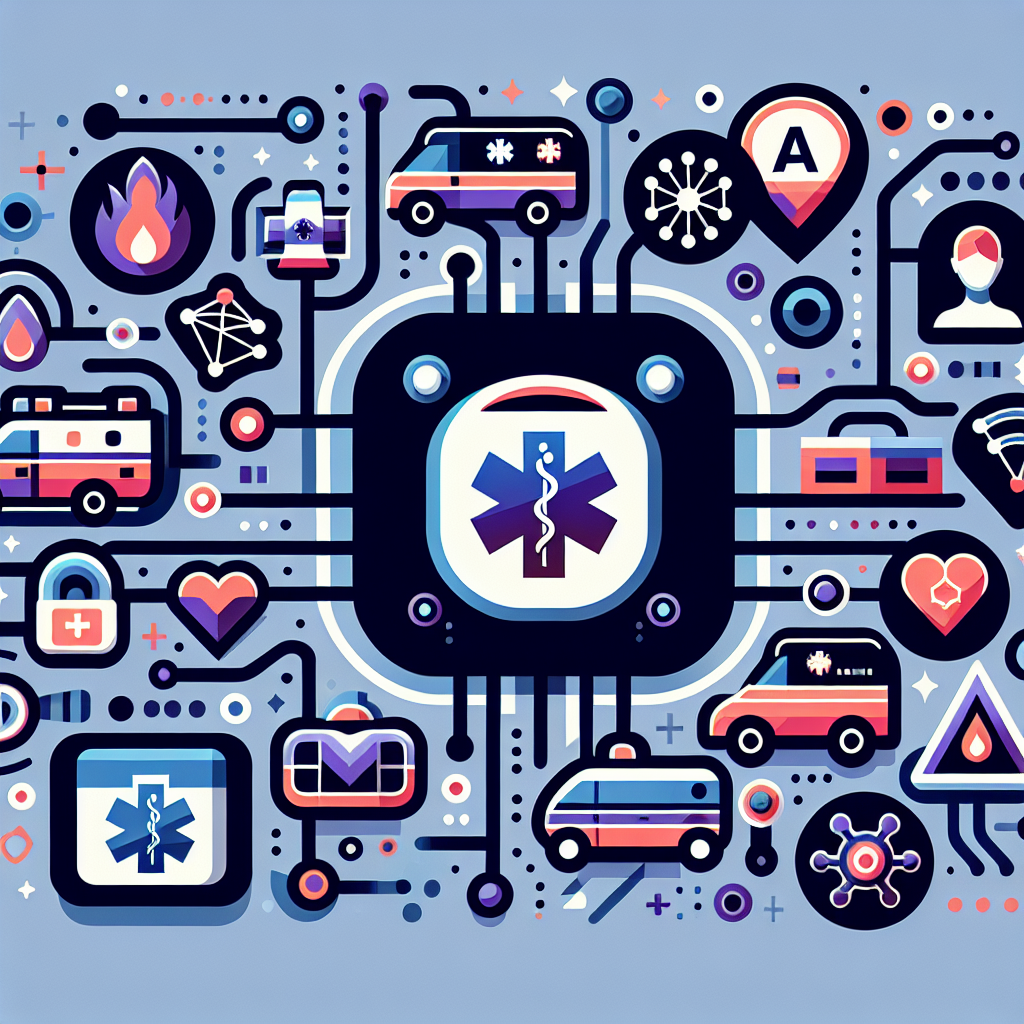In recent years, the integration of artificial intelligence (AI) technology has revolutionized various industries, including emergency response systems. AI has the potential to significantly improve the efficiency and effectiveness of emergency response operations, ultimately saving lives and reducing the impact of disasters. By leveraging AI tools such as machine learning, natural language processing, and predictive analytics, emergency response agencies can better anticipate, assess, and respond to emergencies.
One of the key benefits of AI integration in emergency response systems is the ability to quickly analyze vast amounts of data in real-time. This allows emergency responders to make faster and more informed decisions, leading to more effective responses. For example, AI algorithms can analyze social media posts, sensor data, and other sources of information to identify potential emergencies and prioritize response efforts accordingly. This proactive approach can help reduce response times and improve overall outcomes.
Another advantage of AI integration is the ability to automate routine tasks and processes, freeing up human resources for more critical activities. For instance, AI-powered chatbots can handle incoming emergency calls, gather relevant information from callers, and provide preliminary assistance or instructions while waiting for human responders to arrive. This not only improves efficiency but also ensures a faster response to emergencies.
Furthermore, AI can help emergency response agencies better allocate resources based on real-time data and predictive analytics. By analyzing historical data and current trends, AI algorithms can forecast potential emergencies and optimize resource deployment accordingly. For example, AI can predict where and when emergencies are likely to occur, allowing agencies to pre-position resources in high-risk areas and improve response times.
AI can also enhance communication and coordination among various stakeholders involved in emergency response efforts. By integrating AI-powered communication tools, emergency response agencies can streamline information sharing, facilitate collaboration, and ensure a more cohesive response to emergencies. This can be particularly beneficial in large-scale disasters where multiple agencies and organizations need to work together to coordinate a response.
In addition to improving operational efficiency, AI integration can also enhance the safety and well-being of both emergency responders and the public. For example, AI-powered drones can be used to gather real-time aerial footage of disaster areas, assess damage, and identify potential hazards. This information can help prioritize rescue efforts, guide responders to safer routes, and prevent unnecessary risks. AI can also be used to monitor the health and well-being of responders in real-time, alerting supervisors to potential issues such as fatigue or stress and ensuring appropriate support is provided.
Despite the numerous benefits of AI integration in emergency response systems, there are also challenges and limitations that need to be addressed. One key challenge is the need for robust data infrastructure and interoperability among various systems and platforms. AI algorithms rely on large volumes of high-quality data to function effectively, and emergency response agencies must ensure they have access to reliable data sources and the ability to integrate AI tools with existing systems.
Privacy and ethical considerations are also important factors to consider when integrating AI into emergency response systems. AI algorithms must be designed and implemented in a way that protects the privacy and security of individuals’ data, while also ensuring transparency and accountability in decision-making processes. Emergency response agencies must establish clear guidelines and protocols for the ethical use of AI technology and regularly monitor and evaluate its impact on privacy and human rights.
Another challenge is the potential for bias and discrimination in AI algorithms, which can impact the fairness and accuracy of emergency response decisions. It is essential for emergency response agencies to regularly audit and evaluate AI systems to identify and mitigate biases, ensure algorithmic transparency, and promote fairness and equity in emergency response operations.
Despite these challenges, the potential benefits of AI integration in emergency response systems are substantial. By harnessing the power of AI technology, emergency response agencies can improve their ability to anticipate, assess, and respond to emergencies, ultimately saving lives and reducing the impact of disasters. As AI continues to evolve and become more sophisticated, the possibilities for enhancing emergency response systems are endless.
FAQs:
Q: How does AI help improve emergency response times?
A: AI can help improve emergency response times by analyzing real-time data, predicting potential emergencies, automating routine tasks, and optimizing resource allocation. This proactive approach allows emergency responders to make faster and more informed decisions, leading to quicker responses and improved outcomes.
Q: What are some examples of AI tools used in emergency response systems?
A: Some examples of AI tools used in emergency response systems include machine learning algorithms for predictive analytics, natural language processing for communication and coordination, chatbots for handling incoming calls, drones for aerial surveillance, and wearables for monitoring responder health and well-being.
Q: What are the key challenges of integrating AI into emergency response systems?
A: Some key challenges of integrating AI into emergency response systems include data infrastructure and interoperability issues, privacy and ethical considerations, bias and discrimination in AI algorithms, and the need for transparency and accountability in decision-making processes. Emergency response agencies must address these challenges to ensure the effective and ethical use of AI technology.
Q: How can emergency response agencies ensure the ethical use of AI technology?
A: To ensure the ethical use of AI technology, emergency response agencies should establish clear guidelines and protocols for the design, development, and deployment of AI algorithms. They should also regularly audit and evaluate AI systems to identify and mitigate biases, promote fairness and equity, and protect the privacy and security of individuals’ data. Regular monitoring and evaluation of AI technology are essential to ensure accountability and transparency in decision-making processes.

